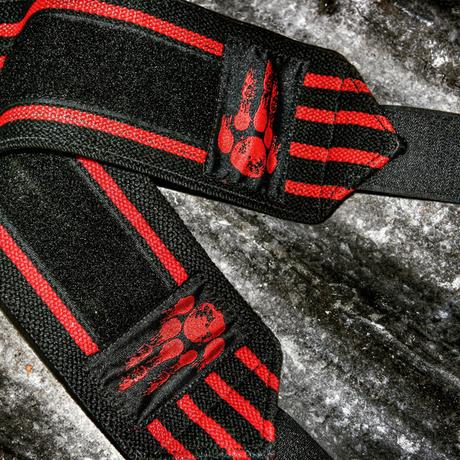There is no shortage of accessories for CrossFit athletes today. Wraps, straps, belts, knee sleeves, and lifting shoes are some of the most common pieces of gear you’ll find on any practical fitness athlete. In my opinion, the wrist wrap is one of the most misused (and overused) pieces of support gear. The purpose of a wrist wrap is to provide support to the wrist joint during heavy or maximum effort lifts in pressing motions and overhead lifts. During these motions, the wrist can be drawn into excessive extension under weight and result in compromised mechanics, possible injury, and failed lifts. Wrist wraps are certainly well worth having for an athlete, but I notice many don’t use them correctly. Here are a few tips to help you get the most out of your training. The wolf is the animal Manimal best relates to. Part of a society yet capable on its own, strong and agile from years of growth, a traveler who can cross regions while never being noticed, adaptive to different environments, ruthlessly determined and aggressive when survival is on the line and most importantly the one animal that has the ability to change its surroundings for the good of nature.
Warm-Up without Your Wrist Wraps
You don’t need to wrap your wrists to move 60% of your 1-RM press. I usually advise my athletes to wear wrist wraps only on training days where we are working at or near max loads. Becoming dependent on wrist wraps all the time tends to limit strength development in your wrist flexors and extensors. Take a look around and you’ll notice that some of the strongest athletes in our gym rarely wear wrist wraps.
Don’t Tie Your Wrist Wraps Too Low
Remember that the purpose of a wrist wrap is to support your wrist joint. If the wrap sits below your wrist joint, you have effectively flipped your wrist wrap into a forearm bracelet that provides no support. Make sure you tie your wrap so that it covers the wrist joint enough to produce support and prevent excessive wrist extension.
Use the Right Kind of Wrap
You will find two primary kinds of wraps on the market: cotton wraps that are thinner and more flexible (ex: Strength Wraps) and the thicker, Velcro-bound power lifting-style wraps that provide more wrist support. If you are trying to maximum out a movement such as a bench press or shoulder press, I would advise using the thicker wraps. If you are going for an utmost in your clean and jerk or snatch, the thinner wraps might be a better choice as they will give you a little more range of motion at the wrist. You’ll need to be able to lengthen your wrist to receive a clean and the wrist will be slightly extended in the finish position of both the snatch and jerk.
You Don’t Need To Wear Wraps for Most Gymnastics Movements
Unless you anticipate gaining a leotard and competing in actual gymnastics events like the vault or pommel horse, you almost certainly don’t need to wear wrist wraps for body weight exercises like ring dips, handstand push-ups, and pull-ups. Exclusion might be training or contending with wrist damage. Also, some sports athletes may choose to have something on the wrists to safeguard their pores and skin when perform high-reps of muscle-ups with a fake grip. The idea here’s that you shouldn’t need wrist support for the majority of the gymnastics motions we perform in Cross Fit.
Don’t Use Wrist Wraps To Hide Mobility and Flexibility Issues
A common excuse for wearing wrist wraps is pain or distress when the wrist is in extension such as the getting position of a clean or when performing front squats. More often than not, an athlete who has distress in their wrist when cleaning or front squatting probably has a poor rack position due to poor mobility in their upper body. Poor thoracic extension, a lack of shoulder flexion and external rotation, and wrist flexibility can all play a role in a poor rack position. Wrist wraps don’t make you more flexible.

